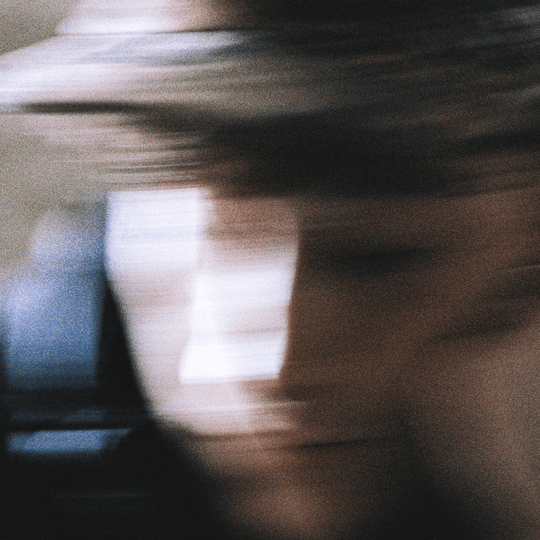Floating Points interview: “The majority of people probably do not care what micro-RNAs are.”
Just an hour after leaving the lab, sitting next to a snowy car park outside a jazz club in Dalston, Sam Shepherd (aka Floating Points) tells me how he is a dedicated PHD student in “the neuroscience of pain”. Unsurprisingly, he has little time for much else, except for (of course) casting his meticulous eye over densely worked electronic music that gushes. Squelchy synth riffs and acidic melodies that are so warm and thick you can almost touch them, and last year his output was prolific. Putting out two of the year’s most revered discoveries – Vacuum Boogie and Love Me Like This – on his imprint Eglo (set up with Rinse FM DJ Alexander Nut) plus a number of other tunes found on other independents or spread across the blogosphere (K&G Beat, J&W Beat, Truly as well as remixes of Little Dragon, Sebastian Tellier), Shepherd’s productivity outstripped even some of the more prolific producers of 2009, making many more established producers look like part-timers, all the while being a part-timer himself.
“Science will be my main thing for the next three years. My PHD will take quite a lot of work and I am glad. It is really exciting, I think it’s quite important work and as a result I am very motivated by it,” Sam says. “As a music lover I am just a big fat consumer, I buy records everyday, I buy CDs, I consume loads of music. What am I giving back to the world? Very little. So I make a bit of it on the side. And I make some science too, which is a bit more lasting. Perhaps not to anybody who likes music. The majority of people probably do not care what microRNAs are.”
And what are microRNAs? “It is all about regulating how you exist on a molecular level,” he says.
Hmm… The regulation of pain at a molecular level? Sounds somewhat opposite to the supple, delicately layered, pleasure-inducing sound of Floating Points and, on first glance, a complete inversion of Shepherd’s academic occupation. Music production is regulated, sure – at times to the nth degree – but, despite the tightness of the engineering, there is freedom, looseness within Vaccum Boogie. Rather than venturing down a microscopic lens, the openness of FP’s soundscapes exist on a macro scale. Vacuum Boogie isn’t pursuing a scientific answer – something unmovable, inanimate or rational – it is otherworldly, transitory and unexplainable. Right?
“Perhaps in terms of technique, my music is probably quite scientific. Or maybe a form of rebellion,” smirks Shepherd.
That’s not to say you cannot be creative with science, he points out. “You can be creative with your ideas,” Shepherd says. “The formulation of scientific ideas is, in a sense, creative thinking.”
Shepherd – along with his ulterior musical persona, Floating Points – unintentionally represents the melting pot for a debate that has troubled philosophers, literary and art critics for centuries. Aristotle said art equates science. Other theorists have argued that, in its pursuit of certainty, science and its tools provide no room for creativity.
But, over time, even artists themselves have reconciled the so-called irreconcilable. The Welcome Collection with its grotesque but exquisite objectification of the anatomy is one overt example. Art used as science, which eventually became science used as art. Whether it is a finely worked aesthetic technique or the execution of an artistic vision or moment – an unmade bed; a semiotic tableau, every artistic form has some sort of scientific method or technique underneath it. It requires some sort of disciplined skill for it to really affect, evoke or express. And the same can be said for electronic music. You only have to listen to Kraftwerk to hear how computerisation – the regimentation of sound – can bring on an emotional whirlwind. The Computer Love.
And that is how Shepherd works. Science and art are inseparable and exist cohesively. They are intrinsically aligned within him. Creative ideas exist within his science and scientific techniques are at play beneath his music.
For example, sampling the sound of inanimate household objects and tying them into the synthetic fabric of Vacuum Boogie is not only creative and experimental, it takes scientific technique. “I sampled a pair of keys dangling, a fire extinguisher and my parents’ Hoover,” says Shepherd. “My flat mate had this Valentine typewriter and it sounds quite nice. That “ding” sound occurs when you hit the key and you get this “schoom” sound almost like a snare as the keys are really chunky.”
Further still, there is something mischievous at work; something almost divine-like. Shepherd constructs a universe threaded with hidden nuance. Vacuum Boogie takes the listener on what appears to be a profound journey away from reality but actually its route is a domestic one. The only clue is in the title.
“That is one of the interesting things about dance music,” says Shepherd. “You’ve got this dance floor and the majority of people don’t really care. They just wanna dance and then you have got this cheeky guy who samples a toilet seat or something really banal or dry and turns it into something funky. I find this really interesting. I get a little bit of pleasure at the audiences’ expense.”
To Shepherd, the relationship between science and art is not academic. His music is not consciously intellectual; it is what comes out naturally, for his amusement. “The music I make is influenced by anything I have heard, seen, felt…,” he says, “And what I have heard is quite wide-ranging and as a result that comes out in my music. There are quite a lot of styles in there.”
Though, while the disparate styles of Shepherd’s do cover the preeminent aspects of dance music from yester years (jazz, boogie, vintage house, soul, funk, cosmic disco, garage), there is a vision of the future to be found in Floating Points. Within the drawn-out cosmic steer of Vacuum Boogie to the squelchy-but-smooth 4X4 house sound in Love Me Like This and the spiraling two-step of J&W Beat, Shepherd has rolled up his influences into a sound that is very difficult to categorise.
“It is the total sum of my input. Anything I have absorbed,” says Shepherd. “I like to dig and find out weird stuff.”
And fitting into any particular genre is not one of his intentions. “I am not concerned with genre,” he says. “I don’t really give a fuck about what anyone else is doing. I like what is going on. I went to Fabric (for Numbers) last Friday and a lot of my friends were playing and they are really good at what they do. They are just doing what they are doing. It just so happens that there are a couple of them and they have got together to make themselves more powerful. They have got this distinct sound and everyone thinks it is a new genre. They are just doing their own thing and everyone starts biting.”
Preferring to avoid the media spotlight, Shepherd’s musical ambition is driven less by an urge to attach himself to a particular scene or leave an imprint on any given musical canvas, it is instead driven by a personal response to the music he has heard and, in turn, spurred on to create. “It is about feeling,” he says. “It is like there is this little bug inside you that wants to move around. I can’t explain why.”
Something else that is hard to explain is his fascination with vinyl. “Everyone listens to music on computers these days by clicking on whatever, but to get a record out, put it on the turntable, put the needle on it, start it, get the pitch right, put the volume up; sort everything out. It is more hassle, so you appreciate it more,” he says. “I like the whole first issue thing – I like copies of records that are in mint condition more than anything. For a collector it is nicer to have an original. When you go to IKEA and you buy a Gustav Klimt print and it is the 10 millionth photocopy, it is diluted isn’t it?”
And while collecting records is a passion, Shepherd has little time for the sanctimonious collectors who refuse to play a record by way of conserving it. “I’ll happily pay a lot of money for a record and play it out on a shit needle,” he says. “What pisses me off is that collectors don’t play them; it is a waste. It is different to visual art which you can hang. To appreciate a record you actually have to damage it. I love the fact that every time you listen to a record you destroy it because that is what makes you appreciate it – you are damaging the art as you listen to it. The needle is devouring the record.”
This macabre image of the death of the record is certainly a Romantic one. Art is for experiencing. There is a kindred relationship there to be had between the tangible art form and its owner. One day it will be gone. The record will deteriorate and its life will gradually be sucked out of it. But at least it lived.
Floating Points is playing at Fabric with Four Tet and James Holden Friday 22 January.













